Ryan Hall's Blog, page 310
December 15, 2015
Photos: 2015 Brazos Bend 100
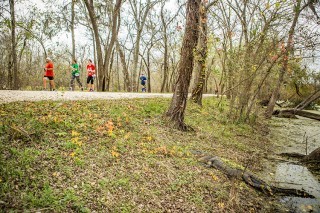
A race known for having alligators strewn out along the course, the Brazos Bend 100 got a little bit of a break this year—cold temperatures mostly kept the alligators in nearby waters (though runners reported seeing alligator eyes reflecting off their headlamp lights at night).
Regardless, the race was a hit once again—one of the flattest ultramarathons out there, consisting of running a 16.75-mile loop six times with only one small hill to speak of. The race, around the marshlands at Brazos Bend State Park outside of Houston, Texas, challenged runners with a strong storm that blew in and created rainy, muddy and windy conditions. The winners were Anthony Jacobs (15:41:19) and Maggie Guteri (17:21:14). There was also a 50-miler, a marathon and a half marathon.
All photos by Myke Hermsmeyer. See more of his work on his website or follow him on Instagram.
Photo Gallery
1 of {count}
Back to Start
View Larger Image

Watch out for alligators. The race is held around the marshlands of Brazos Bend State Park outside of Houston, Texas. The fast course consists of 6x16.75 mile loops and is 99.9% flat with only one place where the hill is 10 feet.
View Larger Image

How the Grinch stole the lead. PRs are easy after your heart has grown three sizes.
View Larger Image

A line in the trees marks the high point of a flood in Brazos Bend State Park earlier this year.
View Larger Image

On warm weather days numerous alligators can been found within feet of the race course. Due to cold weather conditions few emerged from the water but they can be seen easily at night from their eyes reflecting from racer headlamps.
View Larger Image
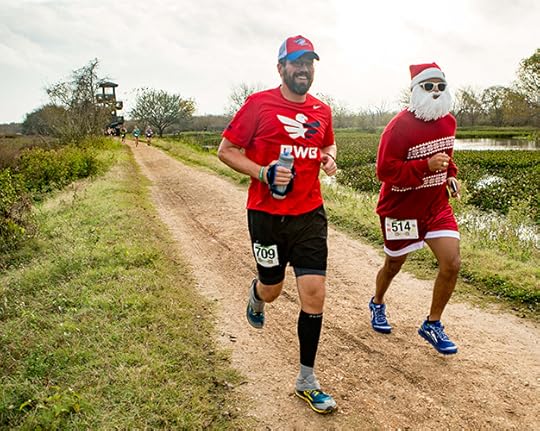
Santa warming up for Christmas with the Brazos Bend half marathon fueled on candy canes.
View Larger Image

The fast trail course is 99.9% flat with one only one section where the hill is 10 feet.
View Larger Image

In many areas the course is entirely surrounded by alligator-occupied swamps.
View Larger Image

Representing team RWB.
View Larger Image

1st place female and 4th overall in the 100 mile race Maggie Guterl finished in 17:21.
View Larger Image

Pushing through the Brazos Bend 50.
View Larger Image

An alligator floating in 40 Acre Lake.
View Larger Image

The course is flat. Real flat.
View Larger Image

One of the locals checking out the race.
View Larger Image

View down on the flat Brazos Bend course.
View Larger Image

Running around 40 Acre Lake.
View Larger Image

On sunny days alligators can be found sunning all around Brazos Park within feet of the race course.
View Larger Image

Tarahumara runner Miguel Lara lead the Brazos Bend 100 through 50 miles but dropped at 66 due to physical issues caused by the humidity.
View Larger Image

Team TROT (Trail Racing Over Texas) runners Matt Zmolek and Patrick Sweeney, who recently ran from racing the Chicago Marathon to racing the New York City Marathon.
View Larger Image

Racers were discouraged from harassing the local wildlife but a few ignored the instructions.
View Larger Image
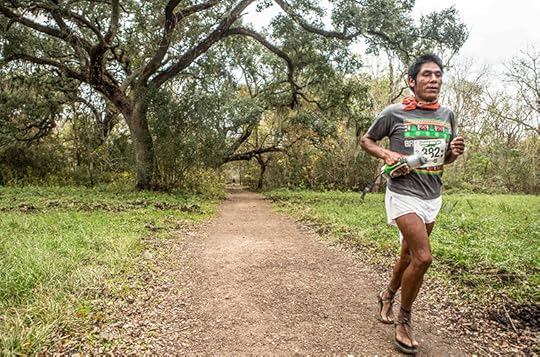
2015 Brazos Bend 100 Samples
Arnulfo Quimare on the final lap of the Brazos Bend 50 wearing sandals he made out of tires.
View Larger Image

Overall winner Anthony Jacobs being paced by Jeff Ball on his second to last lap.
View Larger Image

Men's winner Anthony Jacobs was wiped at the finish.
View Larger Image

Running through the night with gators.
View Larger Image
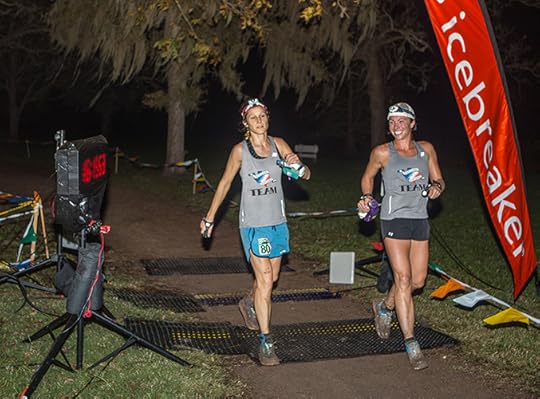
Maggie Guterl finishing 1st female with pacer Gia Dawn Madole.
View Larger Image
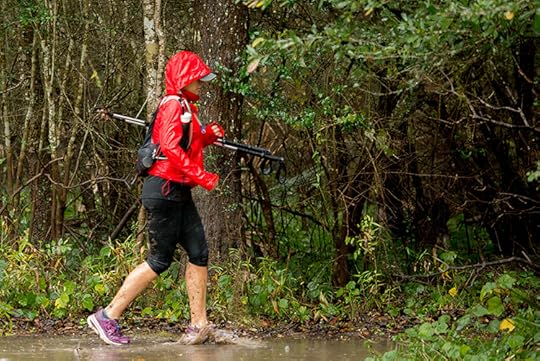
Racers slogged through almost knee high water after an intense storm rolled through during the night.
View Larger Image
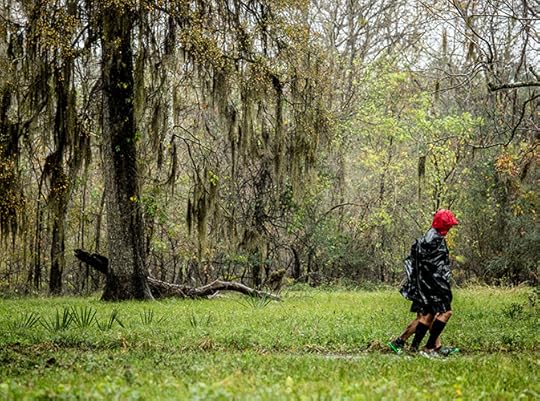
100 milers shuffling through the rain trying to stay warm after a long night.
View Larger Image
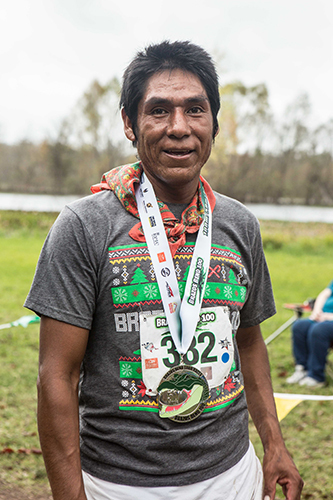
Arnulfo Quimare at the finish line.
View Larger Image
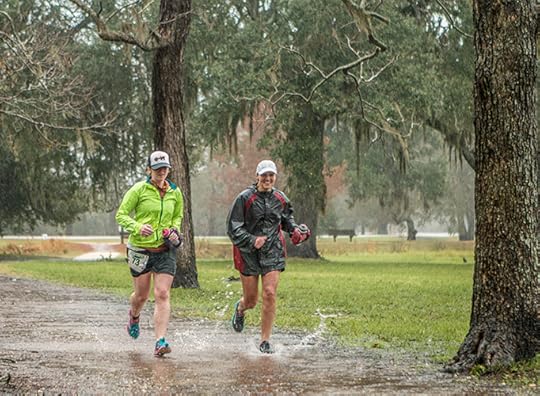
The final 100 miler splashing her way to the finish after a night of strong rain and wind.
View Larger Image
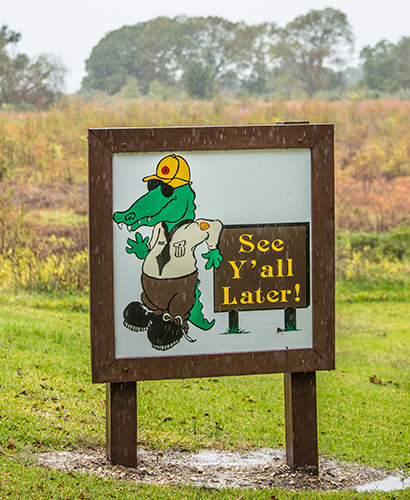
Related Galleries
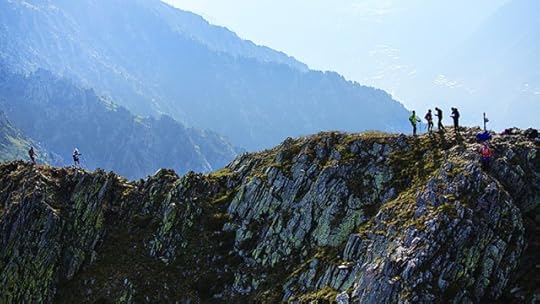
Photos: Andorra’s Ultra Trail Vallnord

Photos: 2015 Honolulu Marathon

Photos: The 2015 North Face Endurance Challenge Championships

Photos: 2015 Humana Rock ‘n’ Roll San Antonio

More Galleries
The post Photos: 2015 Brazos Bend 100 appeared first on Competitor.com.
Gear We Love: December 2015
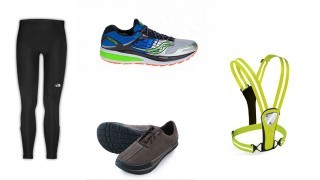
The weather is cooling off and the days are getting shorter. Here’s what Competitor’s editors have been using—and loving—this month:
Photo Gallery
1 of {count}
Back to Start
View Larger Image
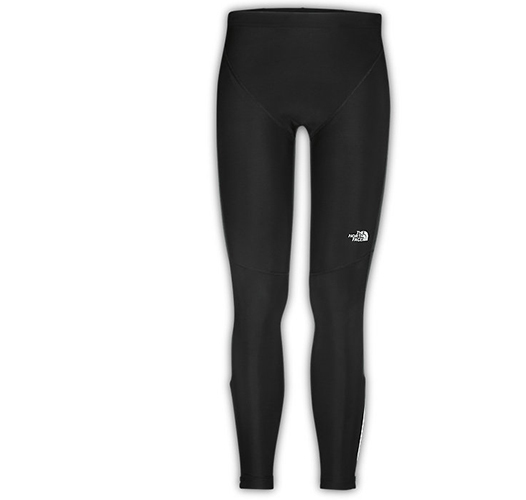
The North Face Men’s Winter Warm Tights
“We’ve had a few chilly, wet mornings in the Bay Area where I live and these tights have done a great job keeping my legs warm without restricting movement or slowing me down. I’ve also worn them over shorts when warming up for races or workouts and the zippers in the lower legs make putting them on and taking them off a breeze.” —Mario Fraioli, senior editor ($85, thenorthface.com)
View Larger Image
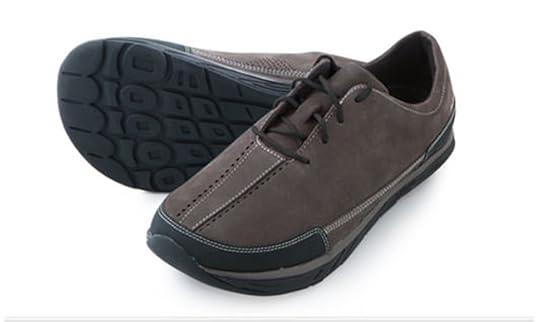
Altra Instinct Everyday
“Altra has made huge waves in recent years by developing shoes that have a zero-drop profile (in other words, a runner's feet sits level from the heel to the toes) and a foot-shaped toe box that allow the forefoot and toes to flex and splay naturally. Their Superior 2.0 and Lone Peak 2.5 trail running shoes are in my regular rotation, while I absolutely love the Impulse and One 2.5 road running shoes. As much as I loved to run in the One, I started wearing that around as an everyday shoe in the summer. I love the style and I also appreciate the zero-drop platform, even when I'm not running. As of late, though, I have been wearing a pair of the Instinct Everyday shoes, a shoe with a premium suede upper that looks good with jeans and with casual khakis. Like its running counterpart, the Instinct Everyday (modeled after the Instinct 3.0), it has a good amount of cushioning in a zero-drop profile (23mm under the heel and toe), it's fairly lightweight (10.3 oz., men's size 9.0) and it serves up a natural ride. I've ditched my heavy, clunky Doc Martens that I've been wearing for years (and it's about time) for something that's more conducive to my running gait. Altra isn't stopping with just one casual shoe. Instead, it will launch an innovative Desert Boot in the spring and I can't wait to get my hands, er, uh, feet, on a pair of those, too!” —Brian Metzler, editor-in-chief ($130, altrarunning.com)
View Larger Image
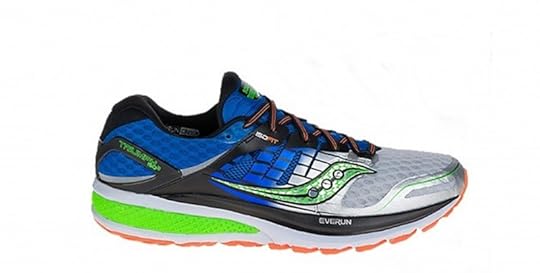
Saucony Triumph ISO 2
"Normally I'm not a fan of over-cushioned shoes, due to the lack of ground feel. However, Saucony's new EVERUN technology in the Triumph ISO 2 presents responsive foam cushioning in the heel that actually promotes better and livelier ground contact for an even more comfortable ride with minimal impact. Plus, a nice and roomy toe-box allows your forefoot to splay securely for maximum stability. These are the perfect long-distance shoes to make the miles glide past." —Emily Polachek, associate editor ($150, saucony.com)
Related Galleries
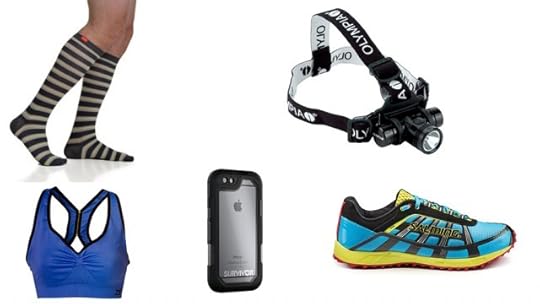
Gear We Love: November 2015
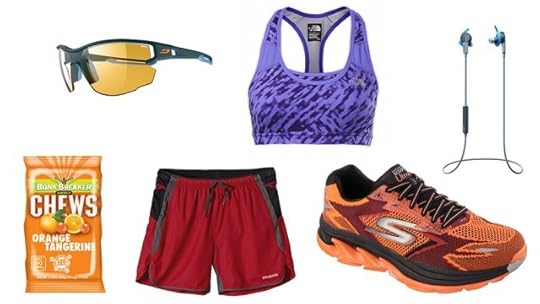
Gear We Love: October 2015
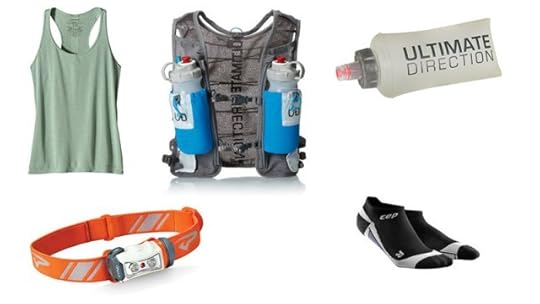
Gear We Love: September 2015
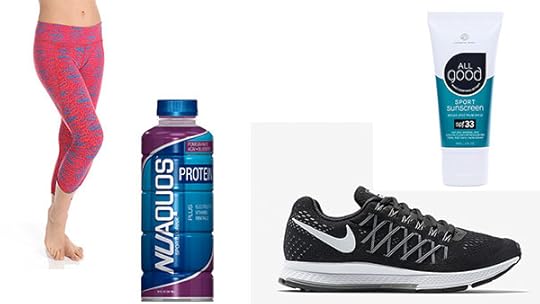
Gear We Love: August 2015

More Galleries
The post Gear We Love: December 2015 appeared first on Competitor.com.
Improve Your Speed with High Knees
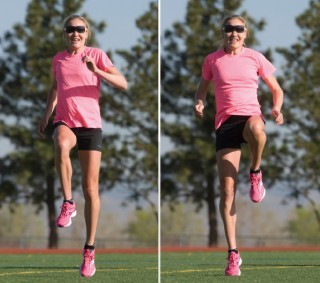
Photo: Mark Doolittle
The high-knee drill exaggerates the running stride, getting your calves, glutes and hamstrings firing while promoting knee lift and encouraging rapid turnover: essential elements for running fast with efficient form.
How to do it:
Running in place, lift your knees to waist level while landing lightly—but quickly—on the balls of your feet, taking fast, powerful strides. Keep an erect posture and pump your arms as if you were sprinting. Perform one set of high knees for 15 seconds, progressing to two to three sets with 15 seconds of rest in between as coordination and conditioning improves. This drill will elevate your heart rate and fatigue your lower legs in no time!
When to do it:
Do this drill two to three times a week after easy runs or as part of a comprehensive warm-up routine before speed workouts and races.
RELATED:
—Video: The Benefits of High Knee Running
—Essential Form Drills for Speed and Efficiency
The post Improve Your Speed with High Knees appeared first on Competitor.com.
Photos: Andorra’s Ultra Trail Vallnord
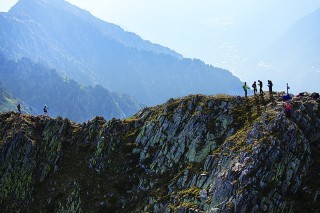
The entire country of Andorra is only 181 square miles. But this landlocked nation between Spain and France feels almost more vertical than horizontal, with 72 soaring Pyrenean peaks and an average elevation of 6,550 feet. The best way to experience Andorra’s rugged landscape is by running in the annual Andorra Ultra Trail Vallnord. It features four major races: Ronda del Cims (105.6 miles), Mític (69.6 miles), Celestrail (51.6 miles) and Marató del Cims (26.2 miles), plus the 10K Solidaritrail. Each event is designed with a looped course to give runners an all-encompassing view of the countryside. But the vistas come with a generous dose of sweat effort—each race has a brutal amount of vertical gain. The 170K Ronda del Cims, which circumnavigates the entire country, tops them all, with more than 44,000 feet of climbing and descending. (The 2016 Andorra Ultra Trail Vallnord is scheduled for July 14–17.)
Photos: Lymbus.com
Photo Gallery
1 of {count}
Back to Start
View Larger Image
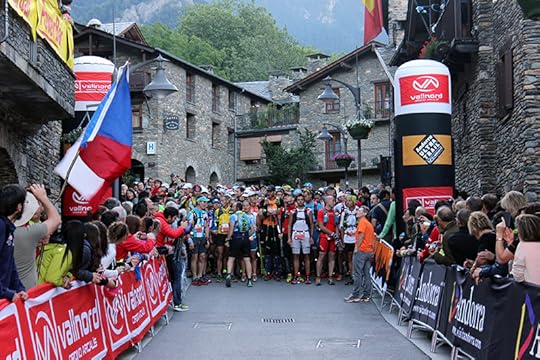
Andorra Ultra Trail Vallnord
View Larger Image
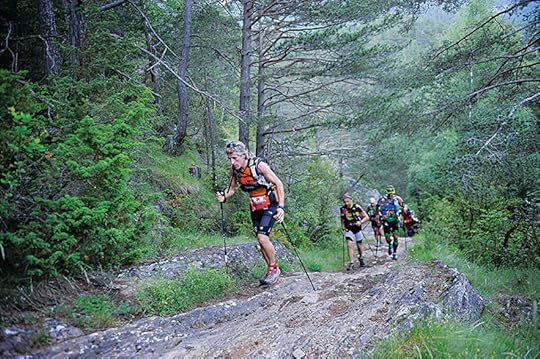
Andorra Ultra Trail Vallnord
View Larger Image
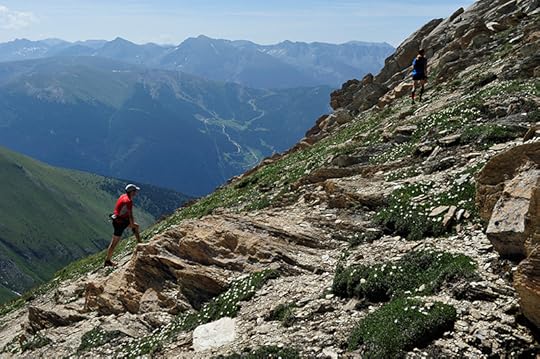
Andorra Ultra Trail Vallnord
View Larger Image
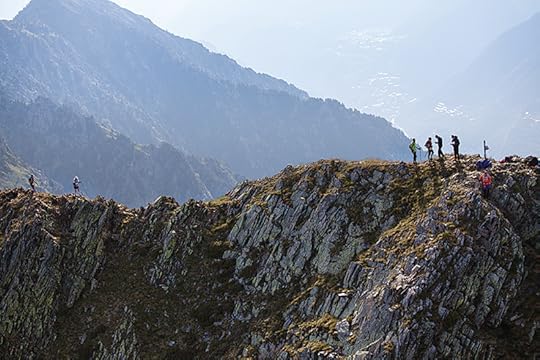
Andorra Ultra Trail Vallnord
View Larger Image
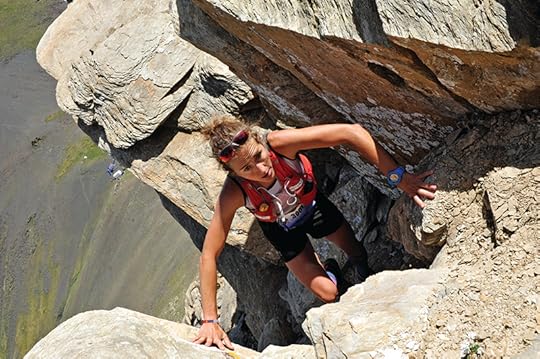
Andorra Ultra Trail Vallnord
View Larger Image
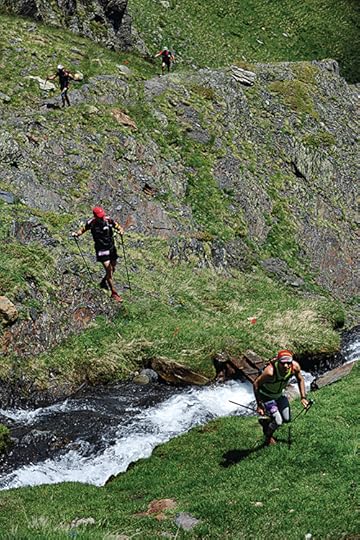
Andorra Ultra Trail Vallnord
Related Galleries

Photos: The 2015 North Face Endurance Challenge Championships

Photos: 2015 McDowell Mountain Frenzy Trail Runs

Photos: The Inaugural Franklin Mountains Trail Run 50K

Photos: 2015 Moab Trail Marathon

More Galleries
The post Photos: Andorra’s Ultra Trail Vallnord appeared first on Competitor.com.
The Power of Compression for Performance
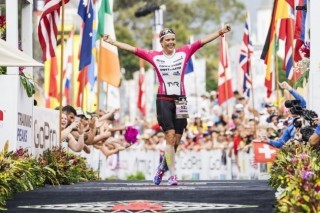
Medical-grade compression socks and sleeves were first used to help prevent blood clots and swelling by increasing circulation post-surgery, in diabetic patients and for inactive people. When athletes picked up on the trend, lighter strength, graduated compression was incorporated for a more forgiving fit over muscles, colors went from neutral to bold and a new trend was born.
When it comes to compression gear for sport, the idea is that it works by increasing blood flow and lessening muscle fatigue and cramps. According to the research, benefits depend upon the activity, which runners getting a definite boost. In a review of more than 30 studies, the Department of Sport Science from the University of Wuppertal in Wuppertal, Germany, found there to be the most benefit in instances of explosive movements, exercising to exhaustion, like running at VO2 max, and in time-trials, basically race simulation.
Professional triathlete Michele Vesterby of Denmark, a CEP athlete who uses compression gear for both training and racing, agrees. During training she believes it helps her to recover faster so she can train harder. For racing, she feels the benefit comes in not feeling as tired. Given the successful racing year she’s had (in 2015, Vesterby placed first at Ironman Copenhagen with a sub-nine hour finish, fourth at Ironman Hawaii and fifth at Ironman Arizona), her theory seems to be holding true.
“I like feeling the support to my calves. It keeps me from feeling as fatigued when I race,” says the 32-year old. “I notice the most difference when I wear them to run.”
Vesterby says while sleeves took some getting used to at first, she’s now worn them for so long and come to realize the benefits, that they’ve become a key element to her race kit. In wetsuit-legal triathlons, she starts the day wearing them under her wetsuit for a quicker transition. In non-wetsuit races she puts them on for the run.
Compression quad and calf sleeves are also popular with mountain runners, who often run courses with seemingly incessant descents and constant pounding. Proponents say compression helps to lessen the muscle vibration that comes with running downhill, thus reducing muscle trauma. Less trauma, means less post-run pain and swelling. And, ultimately, more time running and racing in the mountains.
Popularity extends far beyond the pros and the podium, which skin-tight compression apparel appearing throughout the ranks of road and trail racers. From shirts to shorts to socks, the popularity and personal success stories are on the rise. As are the possibilities to express your personal style, with compression coming in patterns, colors and even with reflectivity. Vesterby can often be seen racing in her favorite color, hot pink.
It’s also accepted that performance is mental as much as physical. Whether it’s a specific pre-race ritual, wearing your lucky socks or compression calf sleeves, you perform better when you feel good. With the possibility of both physical and psychological benefits, adding compression to your race repertoire could be just what you need for a new PR.
When using compression apparel, it’s important to find the right fit. Follow these five tips as you incorporate compression into your racing and training.
Apparel pieces should be tight enough that you notice them, but not so tight as to cut off circulation.
Some brands have sizing charts, which make recommendations based upon calf circumference for products like calf sleeves or tall socks.
Certain products are designed to work best for specific sports, with zonal compression to best support specific muscles. Choose general or targeted compression based upon your needs.
Choose products made from wicking and breathable materials for comfortable workouts.
Determine where you need compression: feet and ankles, calves, your whole lower leg, quads. It depends upon your problem areas or where you want more support.
The post The Power of Compression for Performance appeared first on Competitor.com.
December 14, 2015
Lance Armstrong Wins 35K Trail Running Race In California
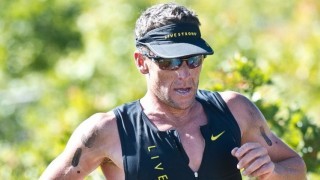
Lance Armstrong, shown here competing in an XTERRA event, has expressed interest in running in trail and ultrarunning races. Photo: XTERRA/triathlete.com
You never know who might show up at a local trail race these days.
Former professional cyclist Lance Armstrong ran in the Woodside Ramble in Woodside, Calif., on Sunday morning, winning the 35K race in 3 hours, 36 seconds.
“Can’t remember the last time I had this much fun suffering for 3 hours,” he Tweeted afterward.
Armstrong, who paid for his registration and competed under his own name, won by nearly 2 minutes over Roger Montes of Belmont, Calif., in rainy, muddy conditions. Tim Stahler, owner of Inside Trail Racing and race director for the Woodside Ramble, said he was made aware of Armstrong’s desire to participate in the event five days beforehand by a personal friend of Armstrong’s who is also a member of the Inside Trail Racing team. While initially hesitant of having Armstrong participate in the race after reading negative comments regarding his desire to run in trail ultra marathons, Stahler says that in the end, there were no on-site issues to report.
“In the end, I expected his participation to be well-received and could be seen as a positive thing, not only for Mr. Armstrong but for the community as a whole,” Stahler wrote in an email on Monday. “Based on the reaction of everyone on Sunday, I believe this was very much the case.”
Armstrong’s participation in the event has caused some negative ripples in the trail running community, however, with some top runners speaking up about the admitted drug cheat’s participation in the sport.
Joe Gray, 19-time U.S. national team member and 9-time national champion, took to Facebook on Sunday, writing, “Race directors allowing him into racing need to understand that it’s not because of his doping alone that he is not welcome. It’s because of the things he did outside of doping and the fact that he could influence others to take the negative plunge he once took.” Gray also posed two questions on his fan page, asking:
1. If someone at your job cheats their way into being promoted multiple times, should they be fired? Should they not lose the opportunity to work at that job and now have to find a new job?
2. I hear people talk about second chances for a “particular” athlete (Who is making their way into trail racing). What of the second chances for the athletes who lost their careers due to being cheated by this athlete? They do not get a second chance do they? They lost something that can never be replaced.
Sage Canaday, three-time Speedgoat 50K champion, course-record holder and winner of the 2014 North Face Endurance Challenge Championships, mirrored Gray’s sentiments in an email exchange on Monday.
“Let’s set a precedent here and now for a [more] clean sport,” Canaday wrote. “No more EPO cheats! Lifetime ban to those that have been caught with high profile PEDs. Stop him from entry into MUT Running races and results. He’s had his years of fame and fortune and screwed over countless others in the process. He destroyed dreams and repeatedly lied and cheated his way to hundreds of thousands of dollars. No second chances when one abuses a heavy hitting PED like EPO.”
Stahler said that Armstrong’s participation generated some buzz around the finish area after the race, but he didn’t encounter any negative reactions or criticisms from other runners.
“In fact, most people just thought it was cool that they saw him out there,” Stahler said. “A few people discussed his past actions, but never made a disparaging remark about him running.”
In a post on the Inside Trail Racing Facebook page on Monday, Stahler’s wife, Tanya, wrote that Armstrong did not receive any special treatment relative to the other runners participating in the event, and acknowledged that he shouldn’t be allowed to compete in any nationally sanctioned events at the elite level.
“We completely understand that you and other runners may feel peeved about or offended by him, but we aren’t loosening our values or ethics by condoning an entry, an act which in and of itself does not condone his past,” Stahler wrote. “The trail running culture is quite different than other competitive sports and Mr. Armstrong has not directly violated this community. I did not personally speak with him, but from what I understand, like all of us, we have identities and part of his identity is being active. We do not think that his presence will cause a spike in doping or produce a shift in the attitudes of ultra runners.”
Before admitting a history of doping throughout the majority of his cycling career in 2013, Armstrong was handed a lifetime ban in 2012 from the U.S. Anti-Doping Agency, preventing him from participating in any athletic event that falls under World Anti-Doping Agency code, including an attempt at qualifying for the Ironman World Championships in 2012. The Woodside Ramble, since it neither operates under the World Anti-Doping Agency code signatory nor recognizes any related sanctions, falls outside of its jurisdiction.
Aside from running the Boston Marathon (2008) and New York City Marathon twice (2006 and 2007), Armstrong has run a handful of smaller running races in the past 10 years, including the Golden Leaf Half Marathon in Aspen, Colo., on a couple of occasions.
Armstrong did not respond to a request for comment at the time of this article’s publication.
RELATED: Ultrarunning at a Crossroads: Is There a Growing Doping Problem on the Trails?
The post Lance Armstrong Wins 35K Trail Running Race In California appeared first on Competitor.com.
Coach Culpepper: What I Learned From Steve Jones
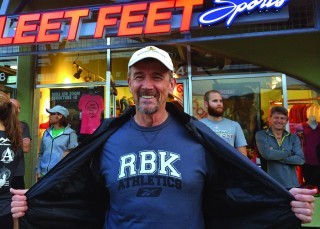
When I was a young professional athlete coming out of college, Steve Jones became a mentor and role model I wanted to emulate. Growing up in Wales, Steve discovered running later than many other world-beaters and took more of a meandering path to greatness. He spent time in the military and even admitted to smoking his fair share of cigarettes before molding himself into a world-record holder and winner of the Chicago, London and New York City marathons.
Steve spent the bulk of his professional career living and training in Boulder, Colo., where I went to school and also lived as a professional. I was fortunate to spend time with Steve, and learned some valuable lessons that I added to my own toolbox. These elements transcend ability and can help you as well.
The Power of Simplicity
Steve’s training was simplistic, with very little variety from week to week. His small repertoire of workouts included hill repeats, harder tempo efforts and fartleks. He also ran fewer miles than many of his competitors. Steve’s secret was in his consistency and emphasis of quality over quantity. He taught me the benefit of running easy days at a more moderate pace and focusing on effort over fancy workouts with hard-to-follow instructions.
The Power of Racing
Steve did not shy away from racing. He raced often and was able to blend racing into his training. Since he didn’t put in very high mileage compared to others, he was able to back off just slightly and include a race into his schedule without having to completely alter his normal routine. Steve would sometimes run a half marathon in place of a long run and be back to training right away, but he never compromised his long-term focus.
The Power of Courage
Steve’s courage is what made him one of the all-time greats. Racing can create a level of fear in all of us—the greater the expectation, the more we fear failure or disappointment. One of Steve’s distinguishing qualities was that he faced fear with courage head-on. In races, he would push the pace from the onset. This is not to say that we should all go out fast and try to hang on, but we all can learn to race with a boldness that leads to amazing performances.
RELATED: Coach Culpepper: What I Learned From Meb
The post Coach Culpepper: What I Learned From Steve Jones appeared first on Competitor.com.
‘Too Wet to Wear a Shirt’ — Runner in Rain-Soaked Chicago Goes Viral
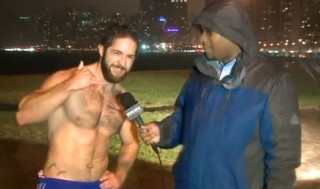
WGN-TV in Chicago was doing a live report on the unseasonably warm and wet weather in the area, when a shirtless runner named Ethan Renoe was stopped in the middle of his 5-mile run along Lake Michigan and interviewed.
The clip immediately went viral, getting more than 1 million views on WGNtv.com in just 12 hours (Ethan telling the viewing audience that he is single probably contributed to this). Since then, WGN has brought Ethan back to the airwaves to discuss this crazy instant-celebrity he gained just from going for a run in the rain without his shirt on.
Never change, Internet.
The post ‘Too Wet to Wear a Shirt’ — Runner in Rain-Soaked Chicago Goes Viral appeared first on Competitor.com.
7 Essential Winter Running Gear
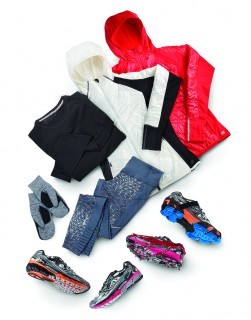
Photo: Nick Nacca
Winter running is all about staying warm without overheating, and staying upright and nimble on slippery surfaces. Here’s some of the newest gear to help you go the extra mile in the coldest, wettest months.
RELATED: 9 Great Waterproof Shoes for Fall/Winter Running
Photo Gallery
1 of {count}
Back to Start
View Larger Image
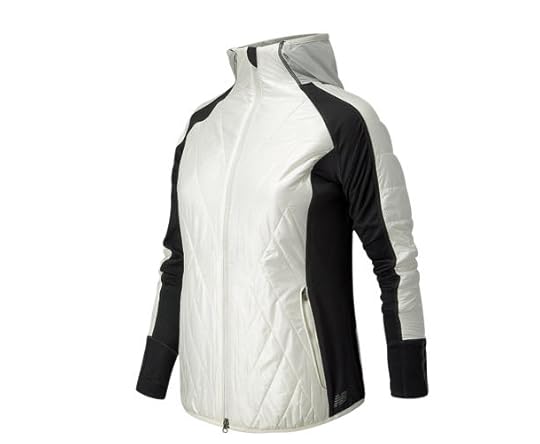
New Balance Heat Hybrid Jacket, $180
Polyester fill holds in heat, and wicking panels move moisture. It also resists wind and precipitation.
View Larger Image
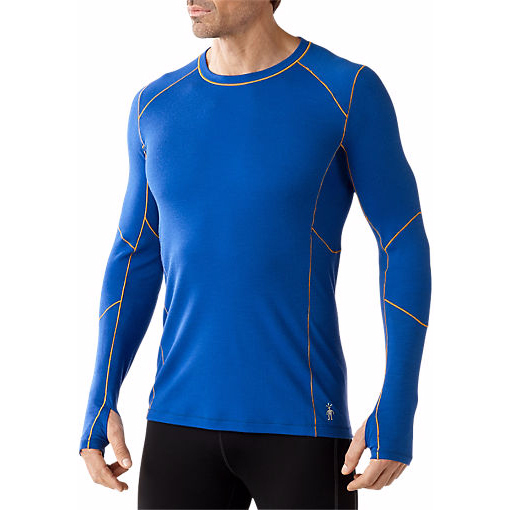
Smartwool PhD Light Long Sleeve Shirt, $85
This wool-poly blend wicks sweat, dries quickly, holds its shape and is soft against your skin. The semi-fitted design makes it an ideal base layer.
View Larger Image
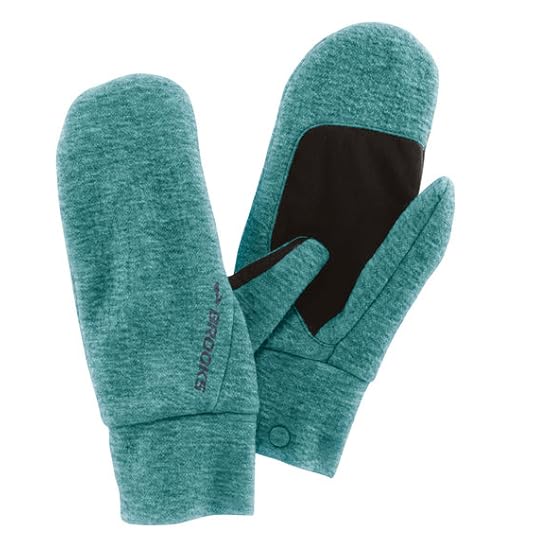
Brooks Joyride Mitten, $35
Keep hands snug in wool and polyester blend mittens. A mesh palm helps prevent that dreaded swamp-hand sensation.
View Larger Image
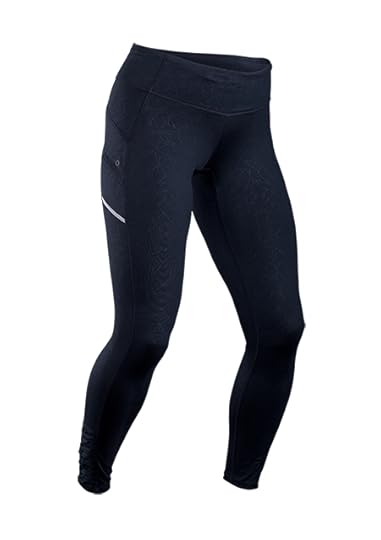
Sugoi Ignite Tight, $90
Plush, insulated fabric keeps legs warm (but not too warm) in freezing temperatures by moving moisture away from the skin.
View Larger Image
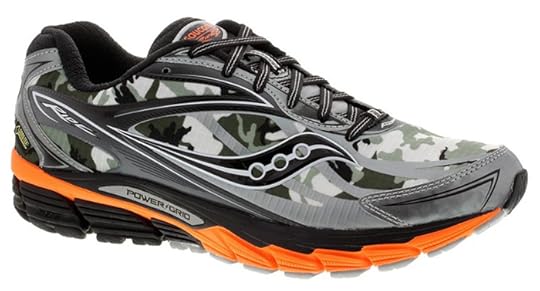
Saucony Ride 8 GTX, $140
These neutral, 8mm-drop cruisers have a Gore-Tex lining for snappy winter running and dry feet even in rain and snow.
View Larger Image
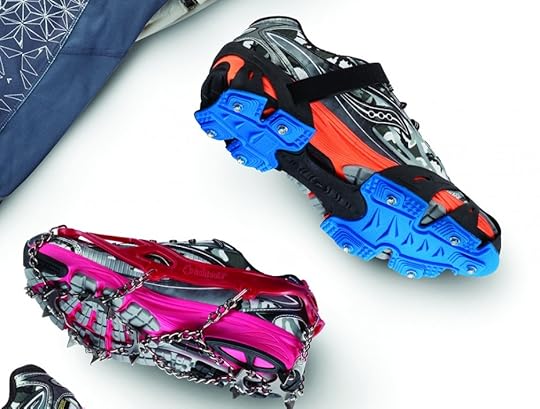
1. Stabilicers Run, $43 and 2. Kahtoola Microspikes, $70
1. The aggressive tread and nine cleats help prevent slipping on black ice and in variable conditions.
2. A high-traction combination of steel spikes and chains that stay put while running yet are easy to put on and remove.

More Galleries
The post 7 Essential Winter Running Gear appeared first on Competitor.com.
Photos: 2015 Honolulu Marathon
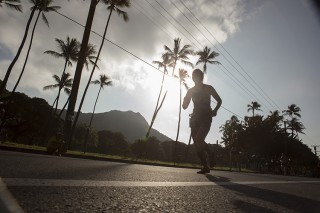
More than 30,000 runners participated in Sunday’s Honolulu Marathon in Hawaii. The race, known for having no time limit, still had a fast field at the front, with Kenyans Joyce Chepkirui and Filex Kiprotich winning the race with nice weather speeding up times in Oahu.
RELATED: Kenyans Sweep Honolulu Marathon in Ideal Conditions
Here are photos of Sunday’s action, courtesy of the Honolulu Marathon:
Photo Gallery
1 of {count}
Back to Start
View Larger Image
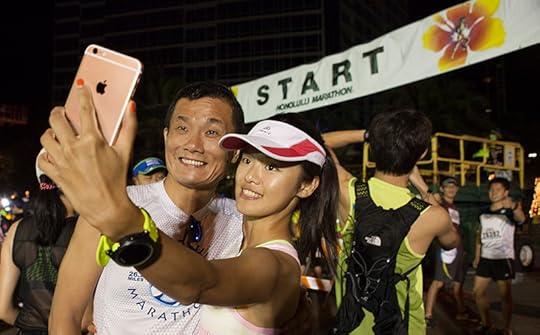
View Larger Image
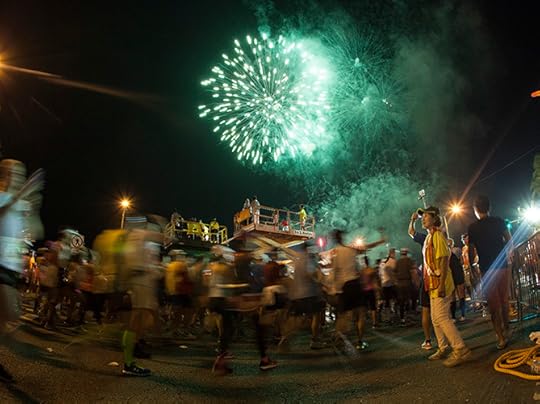
View Larger Image
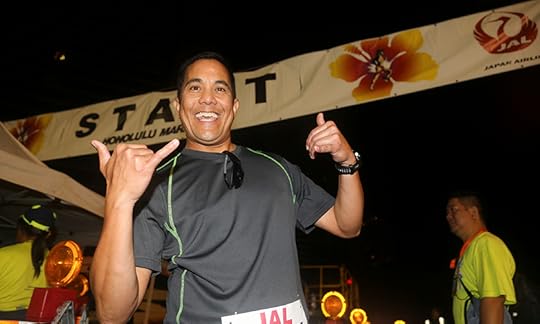
View Larger Image
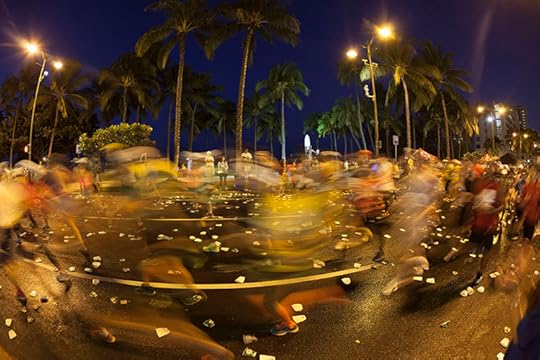
View Larger Image
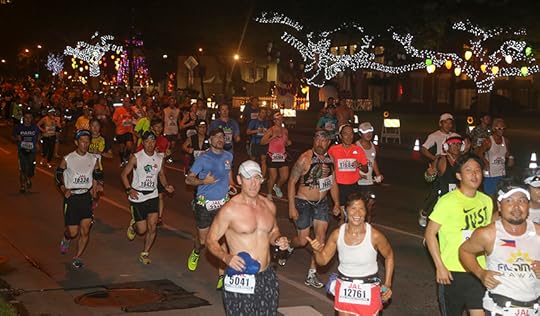
View Larger Image
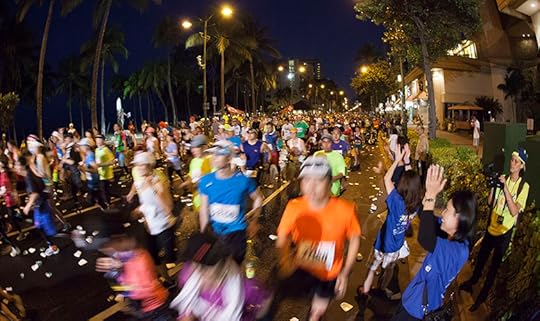
View Larger Image
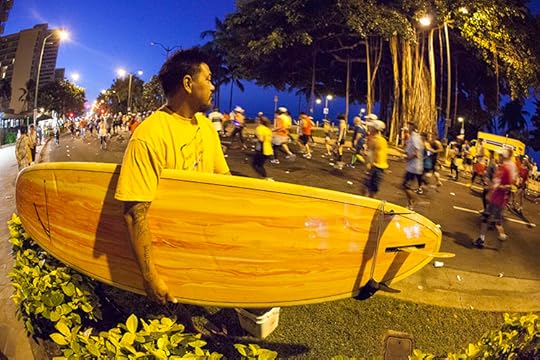
View Larger Image
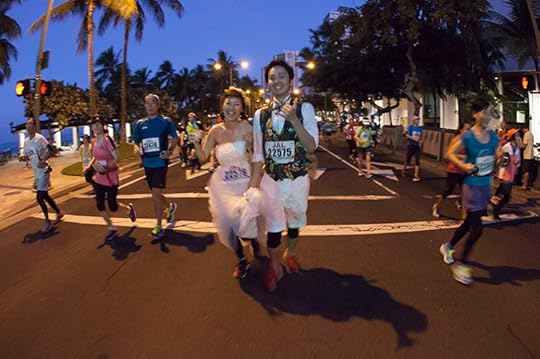
View Larger Image
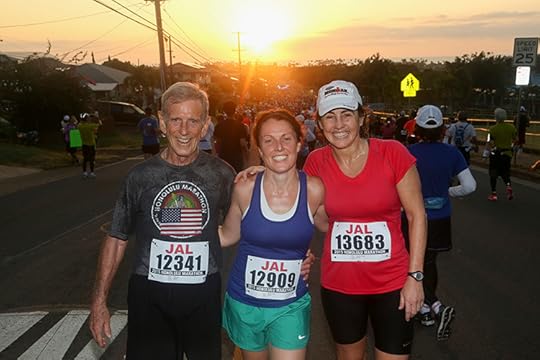
View Larger Image
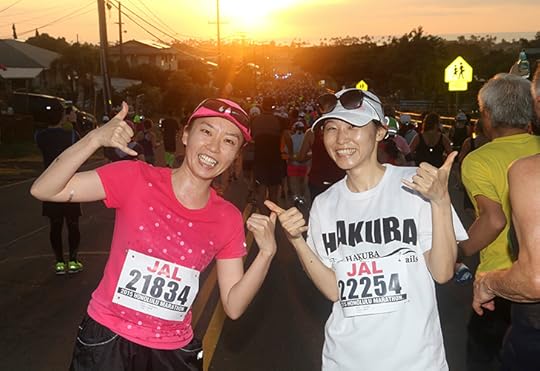
View Larger Image
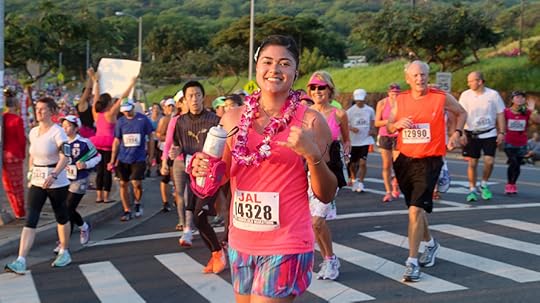
View Larger Image
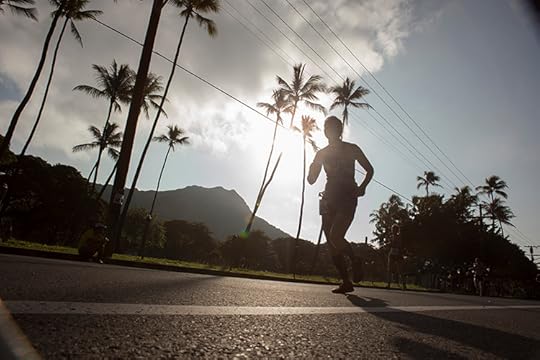
View Larger Image
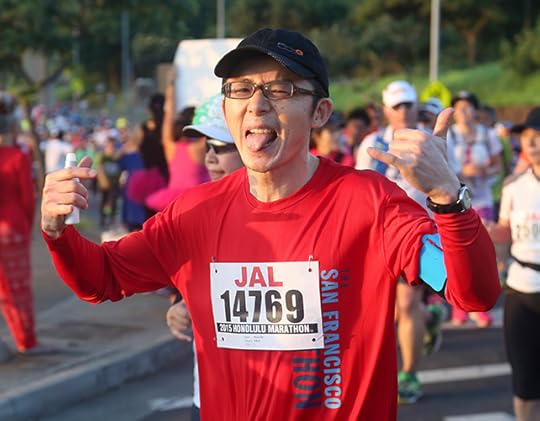
View Larger Image
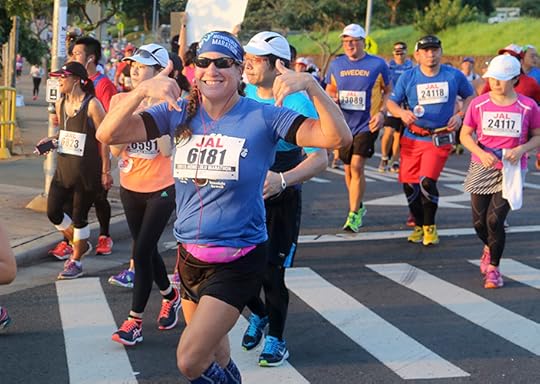
View Larger Image
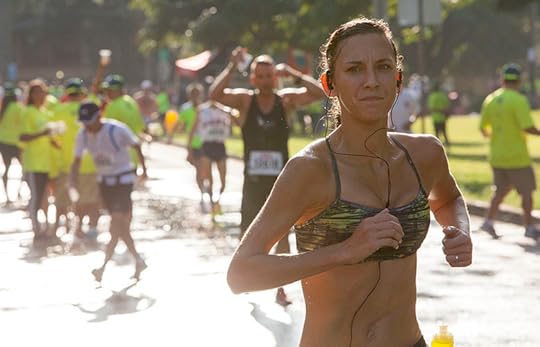
View Larger Image
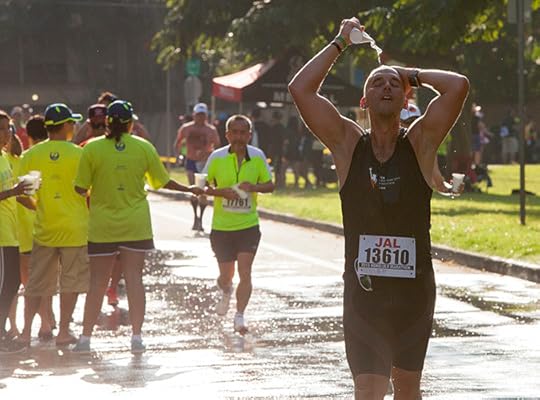
View Larger Image
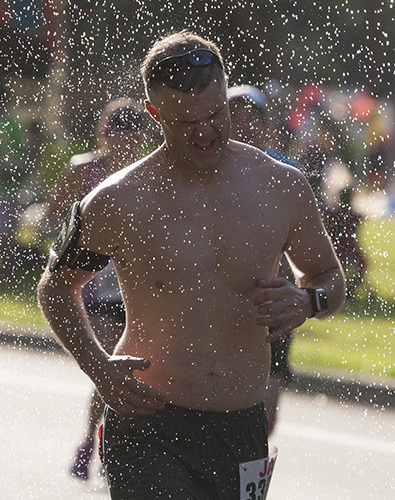
View Larger Image
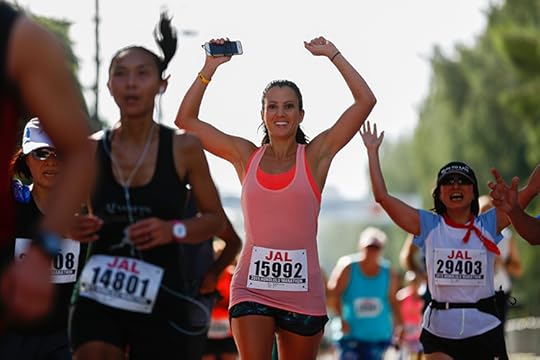
View Larger Image
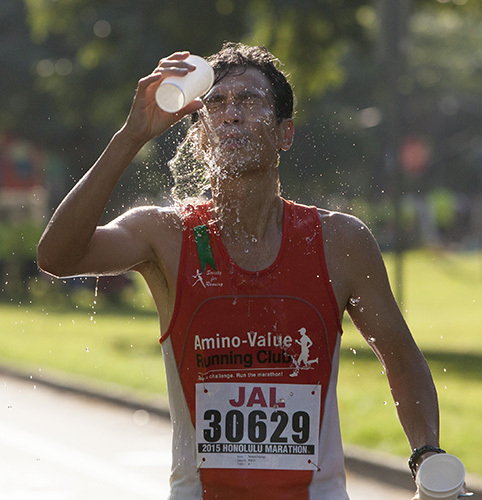
View Larger Image
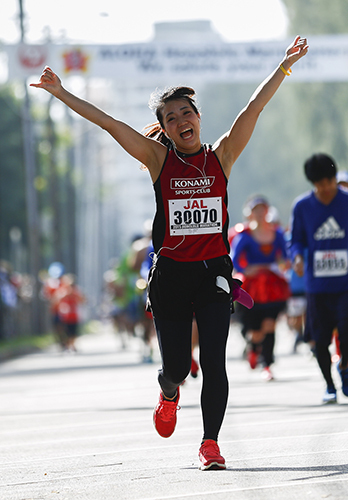
View Larger Image

View Larger Image

Joyce Chepkirui of Kenya wins the women's division the 2015 Honolulu Marathon with a time of 2:28:34.
View Larger Image

Put Ahtlete's Name Here
Daniel Limo, left, Filex Kiprotich, center, and Wilson Chebet, right, all from Kenya are the top three men's finishers of the 2015 Honolulu Marathon.
View Larger Image

View Larger Image

View Larger Image
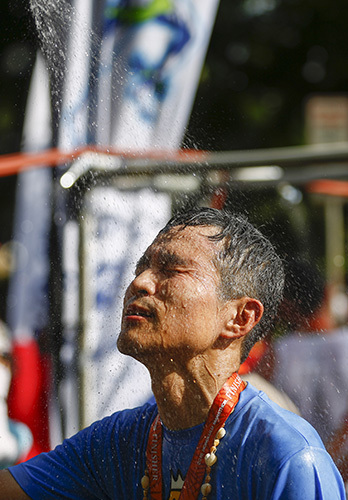
View Larger Image

View Larger Image
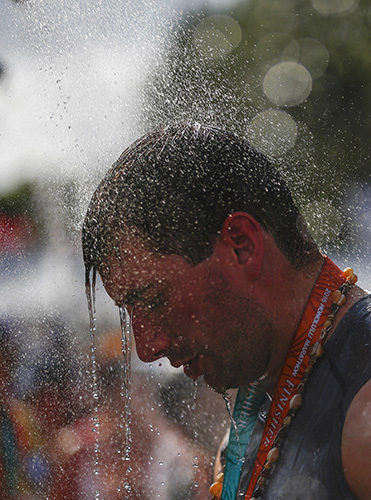
View Larger Image

View Larger Image

View Larger Image
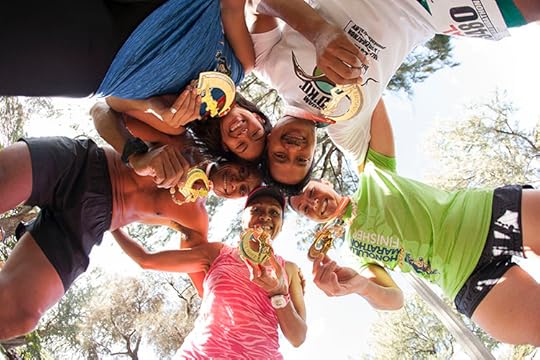
View Larger Image
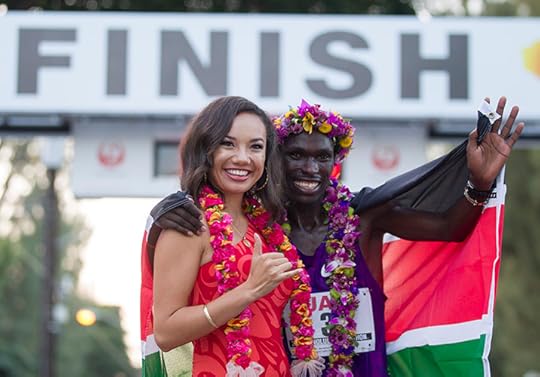
Jeanne Kapaela, Filex Kiprotich
Miss Hawaii Jeanne Kapaela, left, poses for a picture with Filex Kiprotich of Kenya.
View Larger Image
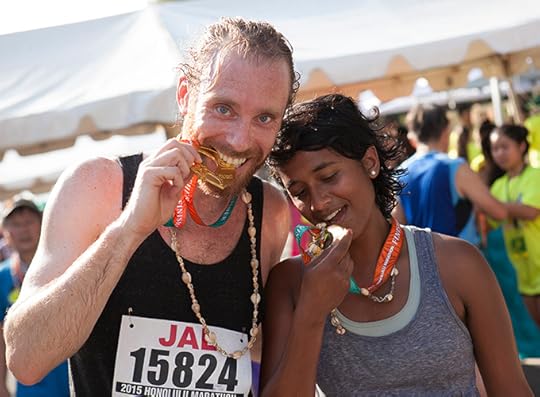
View Larger Image
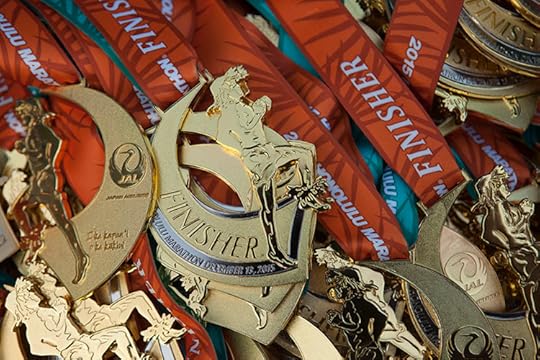
Related Galleries

Photos: The 2015 North Face Endurance Challenge Championships

Photos: 2015 Humana Rock ‘n’ Roll San Antonio

Photos: 2015 Nike Cross Nationals

Photos: 2015 McDowell Mountain Frenzy Trail Runs

More Galleries
The post Photos: 2015 Honolulu Marathon appeared first on Competitor.com.
Ryan Hall's Blog
- Ryan Hall's profile
- 21 followers



